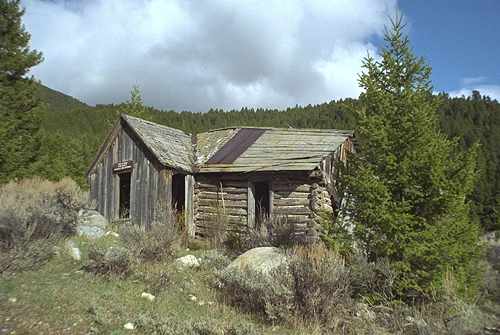
Dating from the second wave of Montana's gold and silver rushes, Elkhorn has survived as one of the better ghost towns in the west. Its principal mine, the Elkhorn, was discovered around 1872 by Peter Wys, a native of Switzerland, and has changed hands repeatedly. Booming in the 1880's and '90's before tapering off in this century, the Elkhorn reputedly produced some $14 million in silver during its long life.

Many of Elkhorn's cabins have been reoccupied. The Fraternity Hall with its castellated cornices and its unique second-story outcropping and the Gilliam Hall next door are the only original buildings of interest.

Inside Fraternity Hall. Many groups celebrated here, sometime even staging prizefights in the spacious interior. Once, during a dance, two men got into a fight over what kind of music the band should play. The squaredancer shot the waltzer dead - and was later hanged for it.

Elkhorn has been designated one of the most important historical sites in the West and renovation has been undertaken by the Western Montana Ghost Town Preservation Society. Elkhorn flourished in the 1880's and 90's, when millions of dollars worth of gold and silver were mined. Reportedly the town had 2,500 residents, with 500 woodcutters, mostly of French and Norwegian descent, were employed to supply wood for the town and the mill.

Elkhorn cemetery

No new graves are to be placed in the old Elkhorn Cemetery due to the many unknown and unmarked graves that are present.

Beatrice, aged 3 and Clara, aged 5.
Marker reads "Here rests the sweetest buds of hope".














